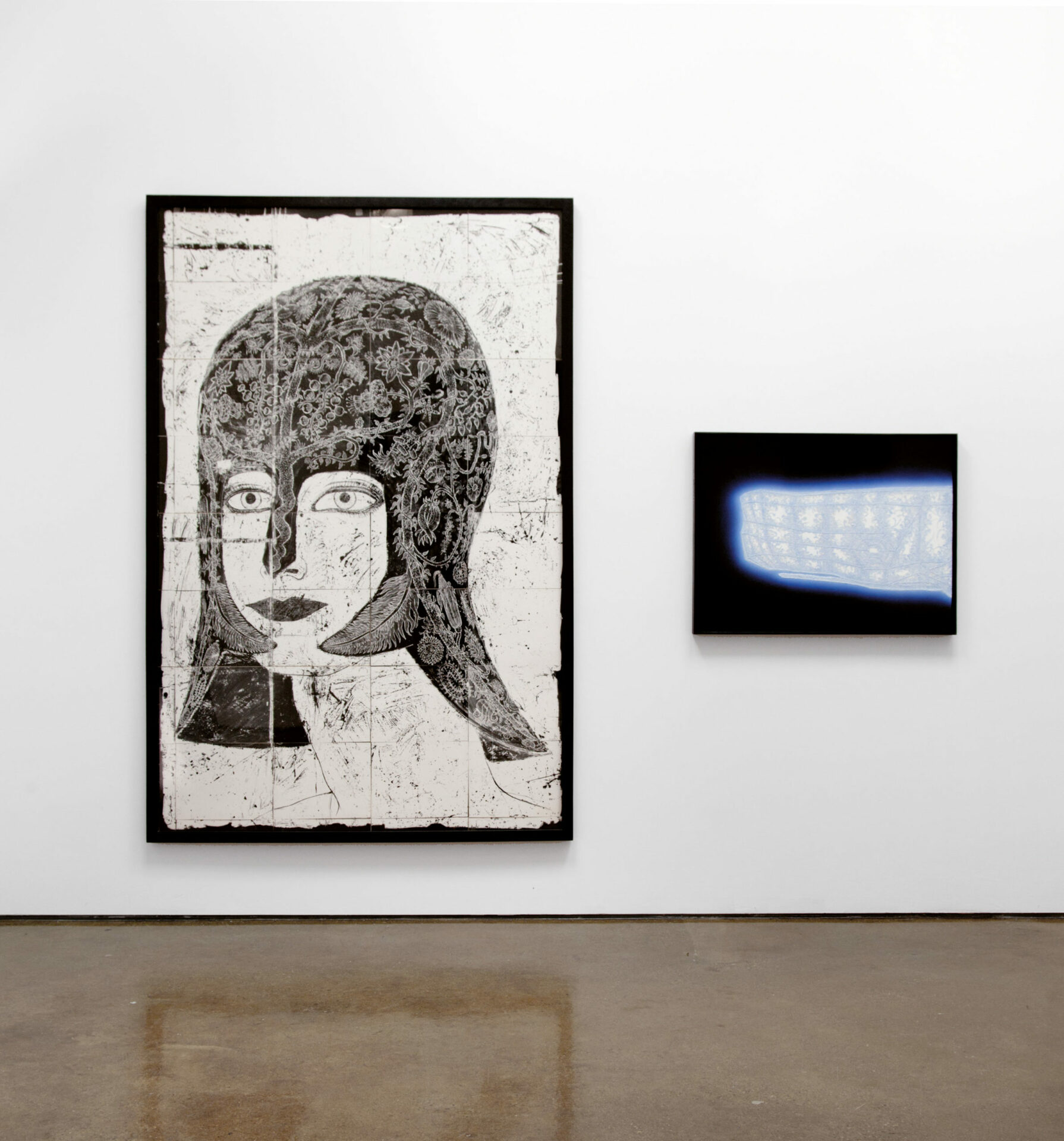Precious Okoyomon
Fragmented Body Perception As Higher Vibration Frequencies To God


Fragmented Body Perception As Higher Vibration Frequencies To God, exhibition views, 2021.
Photos : Da Ping Luo
As New York slowly crawled out of the pandemic this spring, the Brooklyn-based poet, artist, and culinary chef Precious Okoyomon devised a space of recollection and reverence at Performance Space New York in an attempt to tackle the immeasurable grief that resulted from the devastation of the past year. Upon entering the Keith Haring Theater, one stepped into a Zen garden of sorts in which stacks of rocks guarded over a sinuous fountain that housed a handful of fish. One could walk on the clearly marked soil path or decide on their own itinerary across the room, temporarily sitting on the rocks or stepping over the moss and small plants delicately sprouting here and there. The subtle murmur of the stream was accompanied by an audio track that combined drone-like sounds interspersed with human voices, while a snowblower on the ceiling blew out kudzu ashes that nonchalantly fluttered down like snowflakes and gradually piled up on the humid floor.
The use of kudzu ashes in Fragmented Body Perception As Higher Frequencies To God (2021) is particularly noteworthy. Okoyomon made the ashes by cremating kudzu vines planted for her exhibition Earthseed (2020) at the Museum für Moderne Kunst (MMK) in Frankfurt. Inside the walls of the MMK, the vine proliferated silently across the soiled-filled gallery while the institution remained unattended for months during the pandemic. Kudzu, a plant native to Japan, was introduced in the United States in the late nineteenth century as a means to curb the widespread soil erosion that resulted from the cotton industry, most notably in Mississippi. But in this foreign and hostile environment, the vine thrived and grew uncontrollably, strangling and swallowing everything in its path, to a point where its cultivation was eventually banned. Okoyomon’s interest in kudzu stemmed from its paralleled fate with the displaced black bodies of the transatlantic slave trade and how both grew roots in inhospitable ground to become “indispensable to and irreconcilable with” the culture it was forced to serve.
Create your free profile or log in now to read the full text!
My Account



